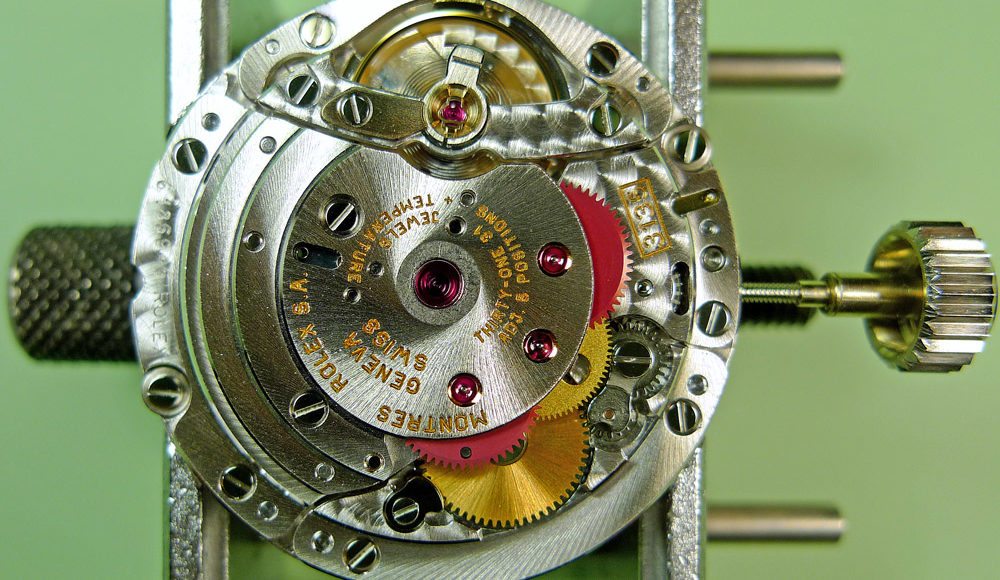When discussing the various movement systems out there in the watch manufacturing world, there is overwhelming agreement that the Rolex watch movement is one of the best in terms of accuracy, reliability, and durability. This would explain why the company hasn’t changed the way they make their watches much since the Rolex 3135 movement was introduced almost 30 years ago. Despite some comments that the Rolex movement is not the most aesthetically interesting or complex system out there, Rolex is one of very few watch manufacturers in the world that make just about every single component for their watches, and because their watches have proven to work consistently well over time, they maintain their popularity and prestige in the secondhand market.
The 3000 Series of Rolex Movements
The Rolex 3035 movement is the earliest iteration of this current in-house system, developed and introduced in 1977. An improvement on Rolex’s 1500 series, the 3035 movement increased the balance speed from 19,800 BPH to 28,800 BPH, allowing for more accurate timekeeping and setting an industry standard. The Rolex 3035 movement was the first automatic self-winding watch mechanism with a quick-set function, used on men’s Date, Datejust, and Sea Dweller watches, as well as some Submariner watch models. These changes also introduced the smooth tick of the seconds hand that has become associated with the Rolex brand.

Image courtesy of chronometrie.com
Released in 1988, the Rolex 3135 movement became the basis for all future Rolex watch movements through the present, improving the overall durability and reliability of the watches and making them technically easier to service. Many pre-owned Submariner watch movements will be the part of the Rolex 3100 series, as well as Datejust, Explorer, Date, and GMT models, but the Rolex 3135 movement didn’t appear in its Air King or Oyster Perpetual models until 2001, when the Rolex 3130 movement was introduced.
The 3130 watch movement is essentially the same as its immediate predecessor, boasting the durability to withstand everyday use while keeping time accurately. The only difference between this and the Rolex 3135 movement is that the 3130 watch movement does not have a date function in any of the watch models that use it, as seen in Air King and some Oyster Perpetual, Explorer, and Submariner watch movements.
Rolex Movement: Continuation of Quality
Introduced in 2000 around the same time as the 3130 movement, the Rolex 4130 movement was the company’s first system entirely designed and manufactured in-house, made exclusively for the Rolex Daytona Chronograph. Replacing the Daytona’s previous Zenith movement, the development of the Rolex Daytona 4130 movement has simplified an already uncomplicated Rolex watch movement, featuring less moving parts than any other modern chronograph while maximizing its time-keeping accuracy and reserve power.

Image from Hodinkee.com
With its focus on the reliability of its watches, the Rolex movement is considered to be almost unparalleled in durability and precision, even as it continues to be one of the largest and most popular brands in the industry. In fact, according to yearly COSC certification statistics, Rolex produces the highest number of chronometers of any mechanical movement manufacturer. Its reliance on the famed and time-tested “work horse” 3135 watch movement has brought the Rolex brand success, which is why it’s no surprise that Rolex’s innovations to its watch movement systems tend to improve on what’s already proven to work.
Get More Articles Like This in Your Inbox
We're constantly creating great content like this. So, why not get it delivered directly to your inbox? By subscribing you agree to our Privacy Policy but you can unsubscribe at any time.






